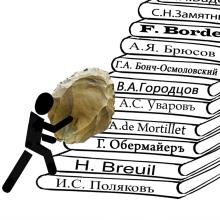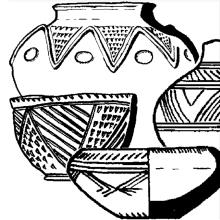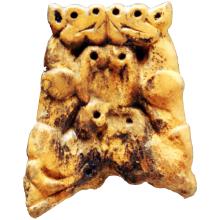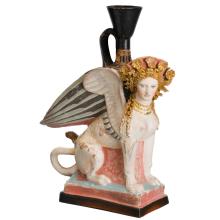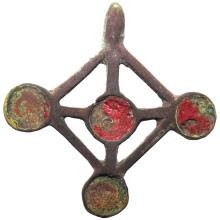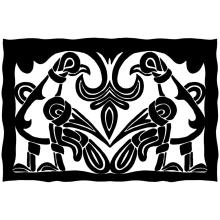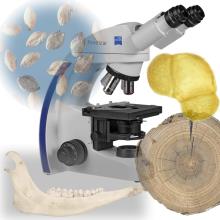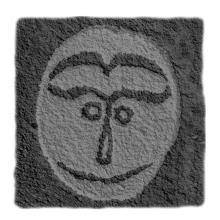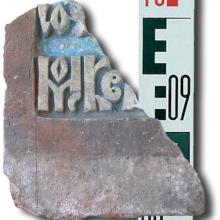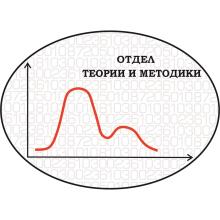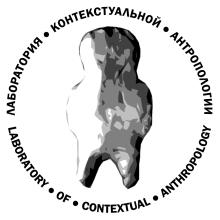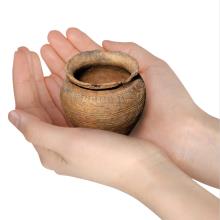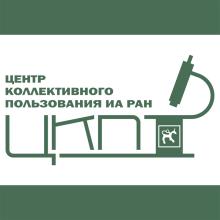The Laboratory of Architectural Archeology and Interdisciplinary Study of Architectural Monuments of the Institute of Archeology of the Russian Academy of Sciences began in 2021 to study the pre-Mongolian frescoes of the St. George's church belonging to the Yuriev (St. George's) Monastery. The project won the competition of the Ministry of Science and Higher Education of the Russian Federation and was supported by a grant from the Government of the Russian Federation. The work of the Moscow archaeologists is carried out with the assistance of the Novgorod Diocese of the Russian Orthodox Church and the Novgorod State United Museum-Reserve.

Research on archaeological finds using an XRF spectrometer.
Workshop "Fresco" in Antonovo
The frescoes are amazing not only for their artistic qualities, but also because of their origin. Fragments of frescoes were found by archaeologists in the course of excavations in and around the church in 2013-2020. During archaeological work small objects – most often tools and decorative objects–emerged from the ground alongside the frescoes. While working, scientists also study the architectural structures and add more knowledge about ancient Russian architecture.
Frescoes and paintings are rarely left in archaeological layers, therefore they are rarely discovered on archaeological excavations. The discovery of thousands of fragments of original fresco painting of the temple during excavations in the interior of the St. George Cathedral of the Novgorod Yuriev Monastery belongs to those exceptional archaeological successes, which bring joy in the research, wonder at the craftsmanship of the ancient painters, and astonishment at the ability of the earth to preserve and give back works of art of this kind.
Field studies at the Church of the Transfiguration of the Savior on Nereditsa
Inside the cathedral of the Yuriev Monastery, founded in 1119 at the behest of Prince Vsevolod Mstislavich, fragments of the monumental painting of the first third of the XII century were preserved only in the slopes of some windows and on the walls of the staircase tower. Almost the entire original ensemble of frescoes was knocked off the walls and the fragments were laid as a foundation for the new cast-iron floor of the temple in the 1820s and 1830s. Individual fragments of this painting were discovered during the XX century during archaeological research on the territory of the Yuriev Monastery, and assporadic finds.
In the course of the years 2013-2020, the Institute of Archeology of the Russian Academy of Sciences carried out archaeological research on thecathedral, under the guidance of Vl.V. Sedov, corresponding member of the Russian Academy of Sciences and Doctor of Art History. Several tens of thousands of fragments of paintings, knocked down from the walls in the XIX century, were discovered and extracted from under the late floor of the cathedral in eight years of work. This huge array of "archaeological" frescoes greatly enhances our knowledge and clarifies our ideas on the characteristics of the pre-Mongolian frescoes of Novgorod.
Our project «Pre-Mongol frescoes in Novgorod: archaeological context and scientific research: The frescoes of the Cathedral of St. George, Yuriev monastery, from the 2013/2020 excavations» was developed to study from different angles the frescoes brought back to light from the earth. We plan to publish a complete electronic and printed catalogue of selected fragments of frescoes and intend to build a 3D model of St. George's Cathedral, seen both from inside and outside. However, the main aim of the current stage of work, part of which has already been carried out, is the study of frescoes by methods of natural sciences, i.e. using for instance a spectrometer (X-ray fluorescence spectrometry, henceforth XRF), a microscope, a scanning electron microscope and other modern scientific methods available to our Institute. The analyses data obtained with the help of natural sciences offer new knowledge on various details of the technology of fresco production, on the materials from which the pigments were obtained and finally on the possible trade of the various materials.
Research of archaeological finds with microscopes
The church of St. George is the ideal object for this kind of research. In addition to the fragments of frescoes from the walls, there also arefrescoes or fresco remains on the walls of the monument, both on the lower parts, previously hidden under the later floor, on some areas of the main part (naos) of the building and in the interior of the staircase tower. The pre-Mongolian frescoes in the interior of the cathedral can be compared with the paintings of the XVIII, XIX, XX centuries, fragments of which are also present in the temple.
Thus, inside one single cathedral is represented the whole history of the development of fresco technology, from Ancient Russia to the beginning of the XX century. For example, the XRF analysis gives an answer to the question whether one of the most expensive pigments of antiquity, lazurite, i.e. lapis lazuli, which was mined in Afghanistan, was present in the composition of the saturated blue color, or was replaced by azurite, a less expensive pigment, but still rare in Russia. Which are the ingredients of the green and red colors used for the paintings of the XII century, and which pigments were used in the later painting? How and in what sequence were layers of plaster and special thin layers of preparation for painting applied to the walls of the temple? Did the fresco plaster differ in its composition from that of the building? These and many more are the still open questions.
To answer these questions, the Institute of Archeology of the Russian Academy of Sciences and the Novgorod Museum purchased a special non-destructive equipment, used for the study of historical and cultural monuments. Introductory research using such equipment was carried out by experts from the Louvre laboratory in 2019. Over the past year, experiments by various methods were carried out in collaboration with the laboratory of the Kurchatov Institute, specialized in the study of cultural heritage materials, and now the Institute of Archeology of the Russian Academy of Sciences has invited to Russia for further work Dr. Alessandra Giumlia-Mair, a scientist from Italy, specialized in the field of archaeometry and cultural heritage materials.

Works in the workshop of frescoes in the Novgorod Kremlin
In addition to the laboratory staff, students of the State Academic University of Humanities, the Lomonosov Moscow State University, and the Yaroslav the Wise Novgorod State University are actively participating in the project.
A series of measurements and the interpretation of these data will provide specific answers to the questions posed. So far, we can say that the frescoes from the St. George's Cathedral and the entire archaeological complex of finds obtained from the excavations of 2013-2020 are of great interest from the point of view of materials science, but they also belong to the oldest examples of Russian painting. Their appearance on the walls of the Novgorod temple marks the very beginning of Russian art, eventhough Greek (Byzantine) masters took part in their creation.
Giumlia-Mair, M. V. Vdovichenko, Vl. V. Sedov


